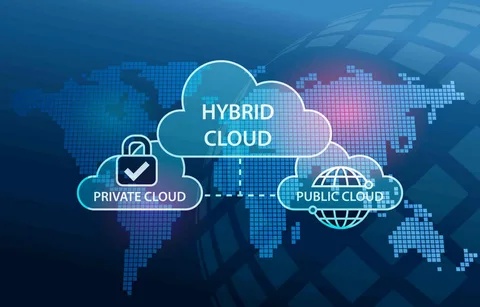In today's rapidly evolving digital landscape, businesses face the challenge of integrating traditional on-premises infrastructure with the agility and scalability offered by cloud environments. The emergence of the hybrid cloud paradigm provides a viable solution to this dilemma, offering organizations the flexibility to leverage the best of both worlds.
Introduction to Hybrid Cloud
The hybrid cloud represents a strategic approach to IT infrastructure, combining elements of on-premises systems with cloud-based services. It enables businesses to seamlessly integrate private and public cloud resources while maintaining control over sensitive data and critical applications. The hybrid cloud model has gained popularity due to its ability to optimize performance, enhance scalability, and mitigate risks associated with traditional IT environments.
Understanding On-Premises Environments
On-premises infrastructure refers to the traditional method of hosting servers, storage, and networking equipment within the confines of an organization's physical premises. While on-premises solutions offer greater control and security, they often lack the flexibility and scalability of cloud-based alternatives. Additionally, maintaining and upgrading on-premises hardware can be costly and resource-intensive.
Understanding Cloud Environments
Cloud environments, on the other hand, provide organizations with on-demand access to computing resources over the internet. Cloud services offer scalability, cost-effectiveness, and the ability to deploy applications rapidly. Public cloud providers such as Amazon Web Services (AWS), Microsoft Azure, and Google Cloud Platform (GCP) offer a wide range of services, including infrastructure as a service (IaaS), platform as a service (PaaS), and software as a service (SaaS).
The Need for Integration: Challenges and Solutions
Despite the benefits of on-premises and cloud environments, integrating disparate systems can present significant challenges. Interoperability issues, data security concerns, and performance optimization are common obstacles faced by organizations transitioning to a hybrid cloud model. However, by adopting robust integration strategies and leveraging advanced technologies, businesses can overcome these challenges and unlock the full potential of hybrid cloud solutions.
Benefits of Hybrid Cloud Adoption
The adoption of a hybrid cloud strategy offers numerous benefits for organizations seeking to modernize their IT infrastructure. By leveraging a combination of on-premises and cloud resources, businesses can achieve greater flexibility, scalability, and cost efficiency. Hybrid cloud solutions also provide enhanced security measures, allowing organizations to protect sensitive data and maintain compliance with regulatory requirements.
Implementing a Hybrid Cloud Strategy
Implementing a successful hybrid cloud strategy requires careful planning and execution. Organizations must assess their unique requirements, evaluate available hybrid cloud models, and develop comprehensive migration and integration plans. By partnering with experienced cloud service providers and leveraging industry best practices, businesses can streamline the transition to a hybrid cloud environment and maximize return on investment.
Best Practices for Hybrid Cloud Management
Effective management of hybrid cloud environments is essential for ensuring optimal performance and security. Automation and orchestration tools can streamline deployment and management tasks, while robust monitoring solutions provide real-time visibility into system performance and resource utilization. Additionally, organizations should implement comprehensive disaster recovery and backup plans to mitigate the risk of data loss and downtime.
Case Studies and Success Stories
Numerous companies across various industries have successfully embraced hybrid cloud solutions to drive innovation and accelerate digital transformation. From small startups to multinational corporations, organizations of all sizes are leveraging hybrid cloud technology to gain a competitive edge and meet evolving customer demands. Real-world examples highlight the versatility and scalability of hybrid cloud environments in delivering tangible business outcomes.
Future Trends and Predictions
Looking ahead, the hybrid cloud is poised to play a central role in shaping the future of IT infrastructure. As technology continues to evolve, organizations can expect to see advancements in areas such as hybrid cloud management, security, and interoperability. Emerging trends such as edge computing, containerization, and serverless architecture will further drive the adoption of hybrid cloud solutions, enabling businesses to stay agile and competitive in a rapidly changing landscape.
Conclusion
In conclusion, the hybrid cloud paradigm offers a compelling solution for organizations seeking to bridge the gap between on-premises and cloud environments. By combining the flexibility and scalability of the cloud with the control and security of on-premises infrastructure, businesses can achieve greater agility, efficiency, and innovation. As the digital economy continues to evolve, embracing hybrid cloud solutions will be essential for driving growth, reducing costs, and staying ahead of the competition.


No comments yet